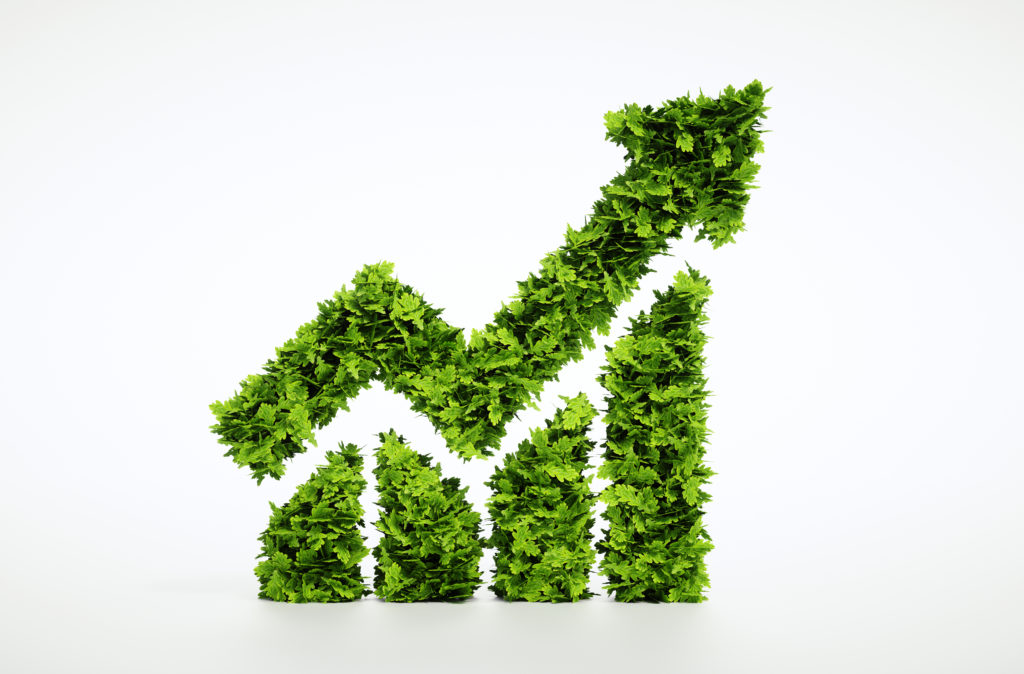Getting Your Money Into Good Stuff is Easier Than You Think

We all know the saying: “change the things you can control, and accept the things you can’t.”
One thing we do not have to accept is terrible companies getting richer.
Where we bank and how we invest our money is something each of us has total control over.
And we can continue to make real, positive change right this minute by getting our money out of crappy companies and into good ones.
It’s true that we only cast our ballots every couple years. But there is more than one way to vote. We do it with our dollars every single day.
It doesn’t matter if you’ve got $40 or $400,000. With socially responsible investing, you can move your money into businesses that give a damn and accelerate social and environmental change. The best part is, it’s so easy to do.
When did socially responsible investing begin?
Socially responsible investing sounds like a new concept, but it’s not. It started around 500 years ago with divestment—taking money out of morally questionable pursuits and diverting it into ones that were values-aligned.
Jewish communities in the 1500s were among the first to divest. Other religious groups followed suit, including Islamic communities and Methodists.
By the mid-20th century, divestment shifted from a religious basis to one rooted in social, racial, and environmental justice.
For example, during the Vietnam War era, a growing number of investors took their money out of companies that manufactured weapons. In the 1990s, investors demanded that companies address major social issues like closing sweatshops, giving employee benefits, supporting unions, and environmental responsibility.
The evolution continues today with racial and gender equity, sustainability, and addressing income inequality. Each new decade builds upon the socially responsible progress of the one that preceded it.
What does socially responsible investing really mean?
Socially responsible investing looks different today in one main way—it’s no longer centered on divestment. Rather, it’s focused on Sustainable or ESG Investing, which means investing in the best companies right from the start.
To do this, we can examine a company’s Environmental, Social, and corporate Governance (ESG) rating to determine the best-in-class companies in every industry. This means that no one particular industry must be labeled as “bad.”
“ESG has really advanced what’s possible for socially responsible investing,” said Marci Bair, President of Bair Financial Planning and Business For Good member. Marci is an expert CFP who works with LGBTQ+ couples, female executives, and small business owners to help them reach their financial goals with investments that are aligned with their core values.
“When I started doing wealth management 30 years ago, there were only about five socially responsible funds to invest in,” she continued. “It just wasn’t enough for people to have proper portfolio diversification.”
Nowadays, the opposite is true—there are literally hundreds of socially responsible funds. In many ways, of course, this is fantastic. But it can also be incredibly overwhelming for the regular person who just wants to make sure their 401k or IRA isn’t totally evil.
“We at Bair Financial go through that universe of funds for you,” Marci said. “We find the right ones that match with your time horizon and hot-button issues so you don’t have to.”
Bair Financial does the same due diligence that any other prudent wealth management firm does. The key difference is they look at companies’ financials and growth potential through the lens of ESG criteria.
“We’re only interested in companies that make money and grow in the right way,” she said.
Busting myths about socially responsible investing
Although socially responsible investing is much more commonplace these days, there are still myths surrounding it. Is it really profitable? Are there a lot of options? Isn’t it just for Gen Z and Millennials? Let us put your mind at ease.
Myth 1: Socially responsible investing isn’t as profitable as traditional investing
That’s right, it’s not. It is even more profitable than traditional investing, in most cases. And there’s now plenty of data to support this claim.
One major source of evidence is the KLD 400 Social Index. It comprises 400 public small, medium and large U.S. companies with the highest ESG ratings in each sector.
The KLD 400 also excludes companies that are incompatible with a common set of “values screens.” Businesses that offer products and services like alcohol, tobacco, gambling, civilian firearms, military weapons, nuclear power, adult entertainment, and genetically modified organisms (GMOs) are omitted.
“We now have over 30 years of data that shows the annualized performance of the KLD 400 Social Index beating the S&P 500 in terms of financial performance,” Marci said. “There’s just no question anymore that investing in doing good is financially rewarding, too.”
Myth 2: There aren’t enough socially responsible companies to diversify my portfolio
“People often think, ‘Oh, socially responsible companies. . . that just means solar farms, or small companies here and there that I’ve never heard of,’” Marci said.
But that just isn’t true. There are plenty of large, U.S. companies with very high ESG ratings to choose from.
“Our portfolios at Bair Financial own literally thousands of well-known, high-performing Sustainable & Responsible companies, not just a tiny portion of the S&P 500,” Marci said.
Myth 3: Socially responsible investing is only for the younger generation
Don’t prejudge any of your clients. This is one main idea Bair Financial makes sure to get across in their education workshops for financial advisors.
“A lot of times, fellow advisors will tell me that they have older, more conservative clients who wouldn’t be interested in SRI at all,” Marci said.
But if clients are properly educated about the financial performance of socially responsible companies, and how they truly help improve the world for their children and grandchildren, they more often than not get on board.
“One of the biggest myths is that only female Millennials or Gen Zers are interested in SRI, but that’s just not true,” she said. “We have straight, white males and super-seniors who also totally get it.”
Socially responsible investing can also serve as the unifying force our nation so desperately needs right now.
“It’s really not a red or a blue issue,” Marci said. “When it comes down to it, most of us can get behind a lot of these same core issues.”
What can you do to start getting your money into values-aligned places right now?
Getting your money into the right places doesn’t need to be—and shouldn’t be—stressful and overwhelming. Use the “good, better, best” model as a guide. Just do what you can to start (“good”), and build on that as your time and resources allow.
Clean up your existing investment accounts
- Active contribution accounts. If you’re actively contributing to a retirement account like a 401k, 403b, or IRA through your employer, contact your fund management company to find the ESG Solution Fund in there. Every retirement account will have one. This can quickly get you on-track to SRI.
- Non-active contribution accounts. If you have a retirement account you’re no longer contributing to because you’re no longer employed with the organization, you have the option to transfer it over to a financial management company like Bair Financial, who can find a whole slew of excellent SRI companies to invest in.
Switch your checking and savings accounts to socially responsible banks
You’re not stuck with the big guys like Chase, Wells Fargo, and Bank of America. There are lots of socially responsible banks that you can choose to do business with instead.
- Open a personal checking account – Banks that are minority-owned, women-owned, or are B Corporations are ideal choices for your banking needs (“better/best” option). But a basic “good” option is to bank with a local credit union, since they’re local and owned by members, not shareholders.
- At least open a savings account or CD – Opening a new checking account can definitely be a hassle, especially when we have dozens of auto draft accounts tied to it. If it’s too much trouble, go the “good” route and at least open a savings account or a CD with a socially responsible bank.
“The ultimate goal is to invest for a positive, socially sustainable impact through conscious application,” Marci said. “But it really does take that conscious thought first. So, if you’re even considering SRI, know that you’re already helping to make a big difference.”
